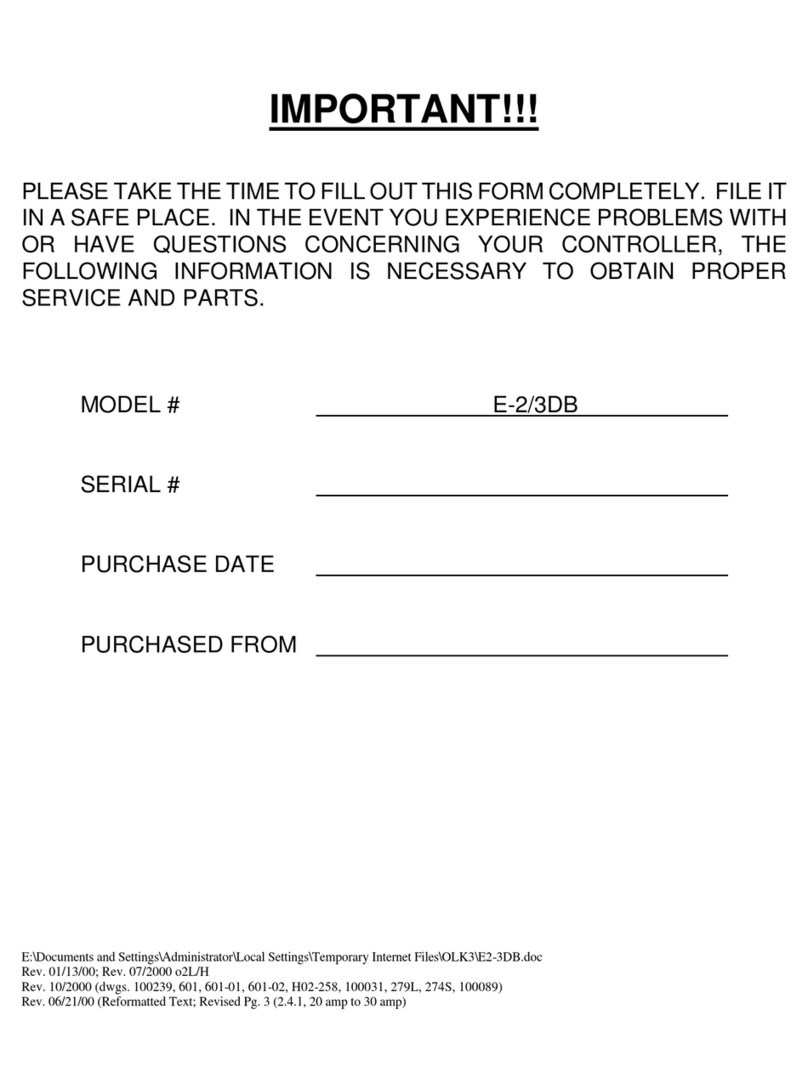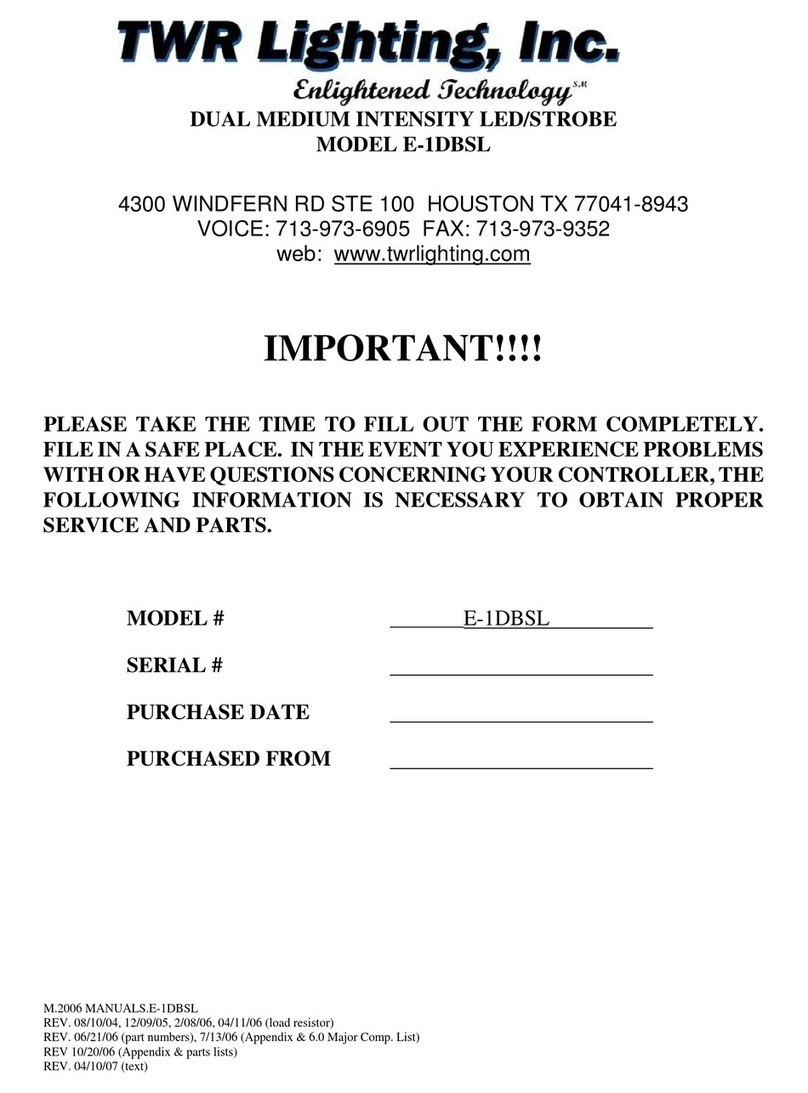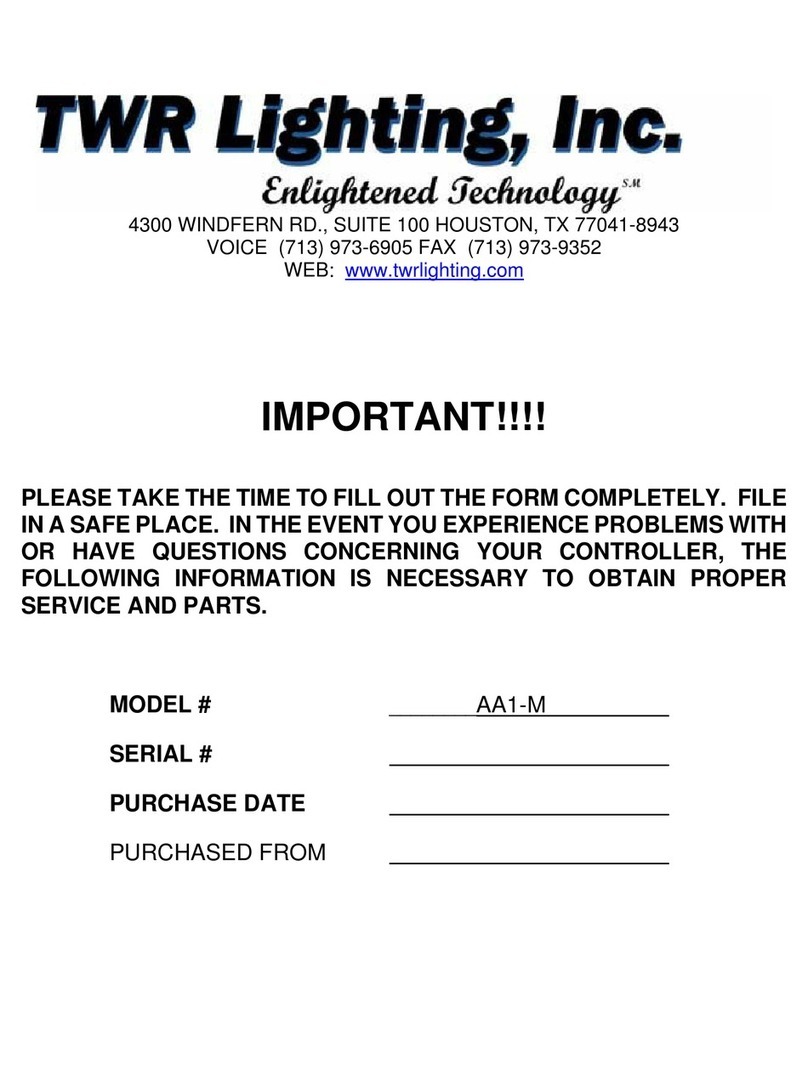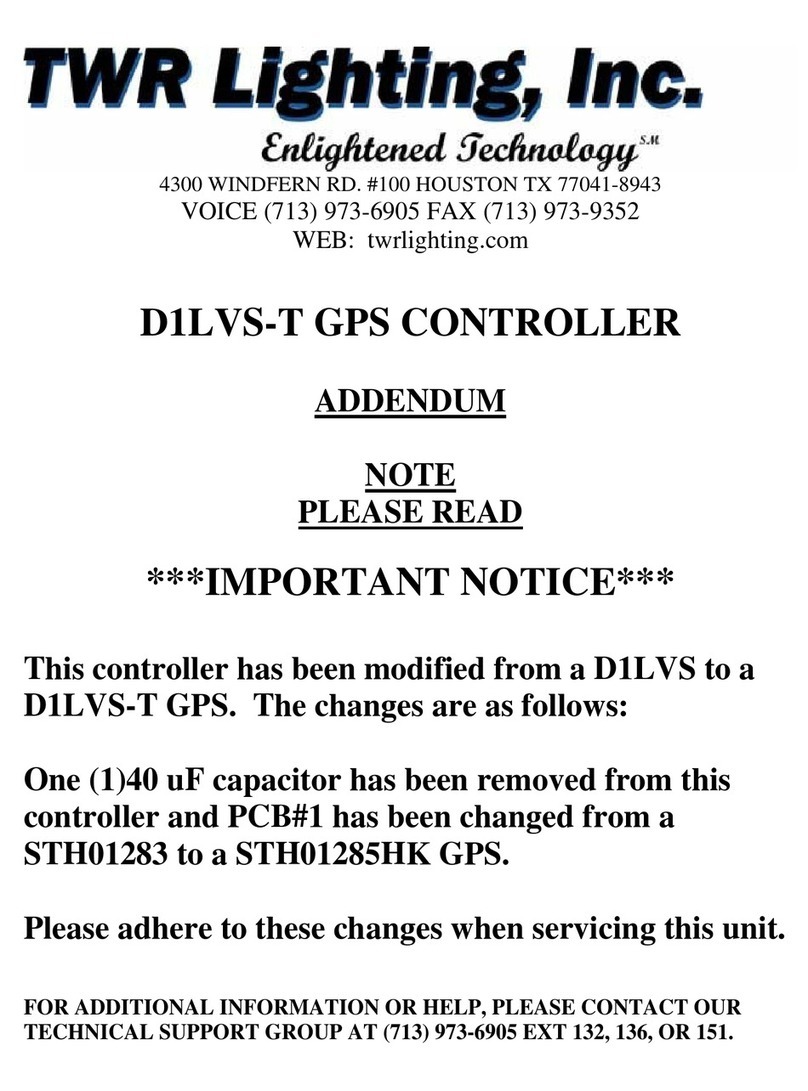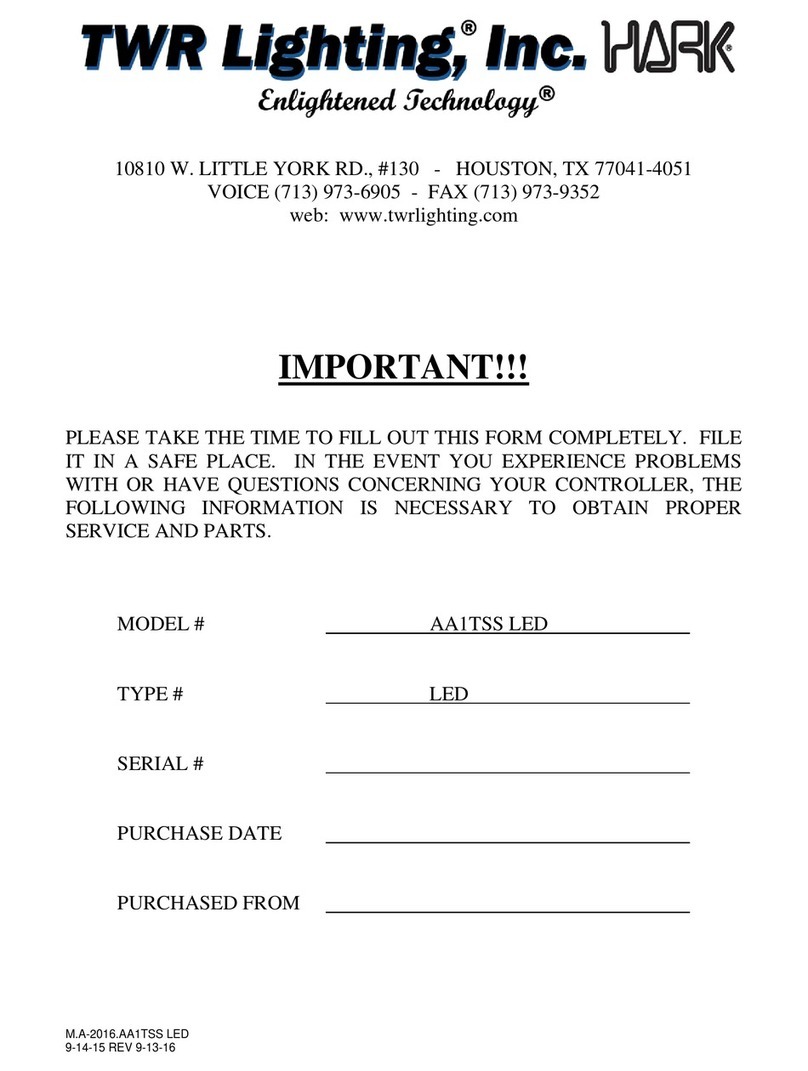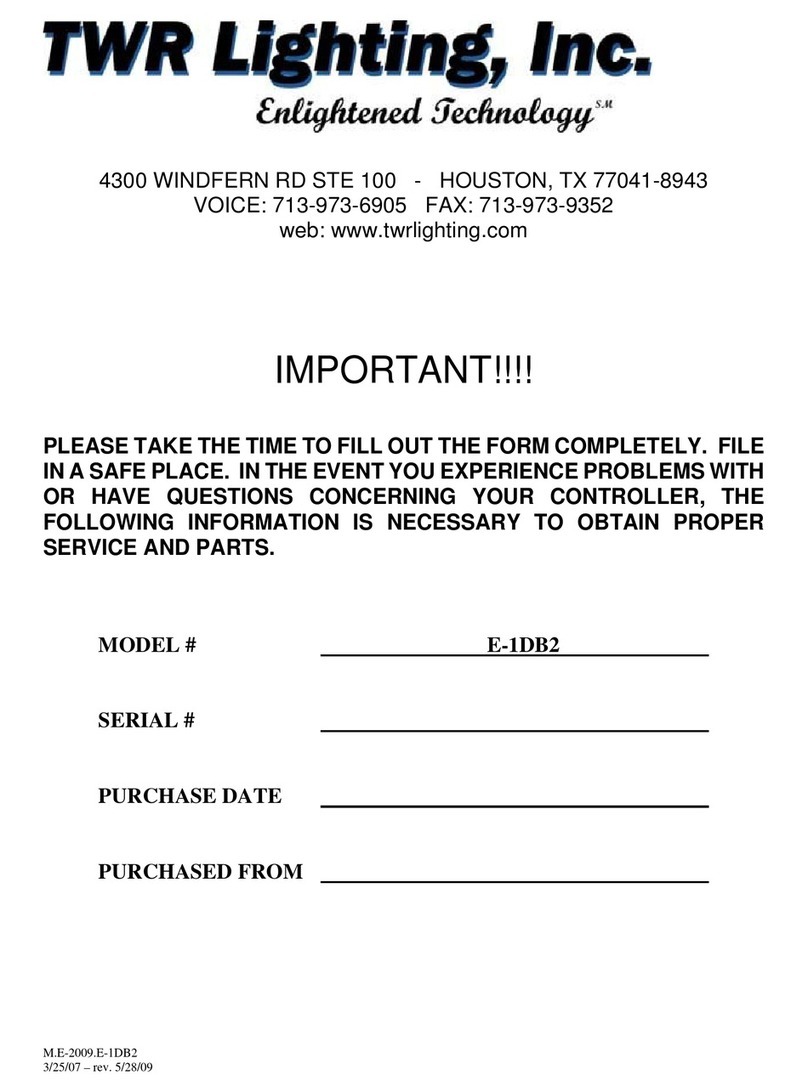
D-1LVS-24V DC CONTROLLER
M.2007 Manuals.D-1LVS-24V DC
09/14/07
TABLE OF CONTENTS
1.0 INTRODUCTION..........................................................................................................................1
1.1 APPLICATION.................................................................................................................1
1.2 SPECIFICATIONS OF EQUIPMENT...........................................................................1
2.0 INSTALLATION...........................................................................................................................2
2.1 POWER SUPPLY CONTROL CABINET MOUNTING.............................................2
2.2 PHOTOCELL HOUSING ...............................................................................................2
2.3 PHOTOCELL WIRING ..................................................................................................2
2.4 POWER WIRING ............................................................................................................3
2.5 TOWER LIGHTING KIT ...............................................................................................3
2.5.1 Beacon Mounting.................................................................................................3
2.5.2 Lighting Kit Wiring.............................................................................................4
2.6 ALARM WIRING ............................................................................................................4
2.6.1 Alarm testing........................................................................................................4
2.6.2 Strobe Failure (SF) ..............................................................................................4
2.6.3 Power Failure (PF)...............................................................................................4
2.6.4 Photocell (PC).......................................................................................................4
3.0 THEORY OF OPERATION.........................................................................................................5
3.1 THE POWER SUPPLY ...................................................................................................5
3.2 THE FLASHTUBE...........................................................................................................5
3.3 TIMING CIRCUIT...........................................................................................................6
3.4 TRIGGER CIRCUIT .......................................................................................................6
3.5 ALARM CIRCUITS.........................................................................................................6
3.5.1 Strobe Failure (SF) ..............................................................................................6
3.5.2 Photocell (PC).......................................................................................................6
3.6 BLEEDER CIRCUIT.......................................................................................................6
3.7 DIAGNOSTIC LEDs........................................................................................................7
4.0 TROUBLESHOOTING ................................................................................................................8
4.1 TOOL REQUIREMENTS...............................................................................................8
4.2 DIAGNOSTIC EVALUATION.......................................................................................8
4.3 TROUBLE SHOOTING ASSISTANCE ........................................................................9
4.3.1 Flash Verify LED - Out.......................................................................................9
4.3.2 Control Power On LED - Out.............................................................................9
4.3.3 Primary Timing LED Out...................................................................................9
4.3.4 False or Nonexistent Beacon Alarms..................................................................9
